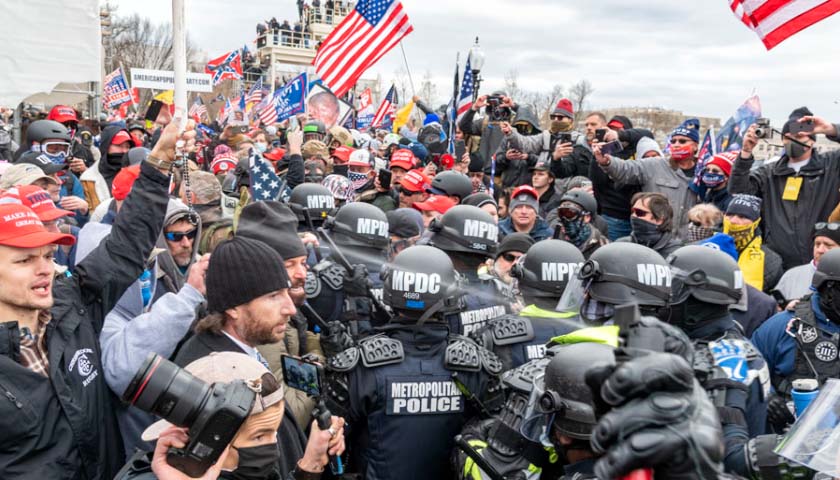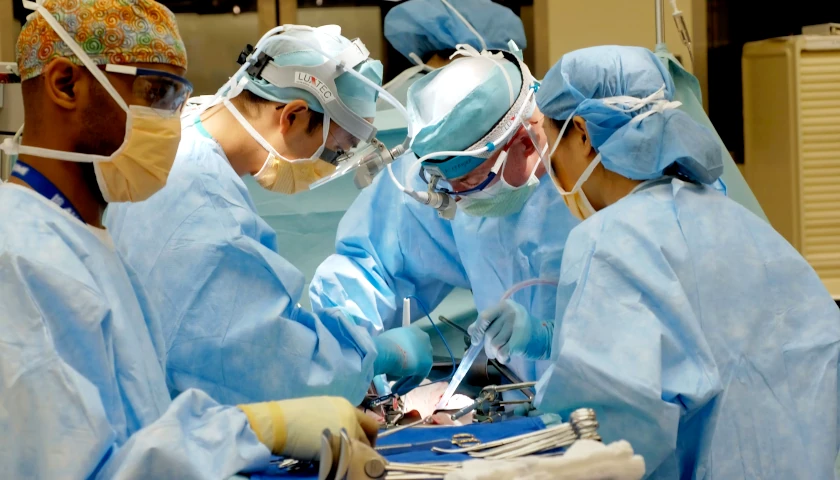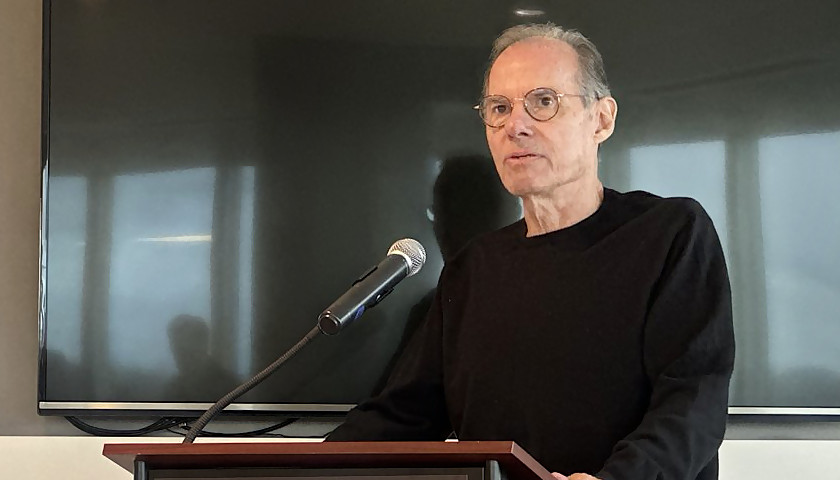by Julie Kelly
The most violent clashes between police and protesters on January 6 occurred inside and outside the west terrace tunnel. The tunnel leads to doors that open into the Capitol building; according to federal documents, “the Lower West Terrace Door was heavily guarded by U.S. Capitol Police and [D.C. Metro Police] personnel, who had formed a defensive line to prevent unauthorized access into the U.S. Capitol via the tunnel.”
Dozens of people have been arrested and charged with various offenses, including assaulting police, for their conduct at the tunnel that afternoon.
It also is the location where Roseanne Boyland lost her life. The Georgia woman was one of four Trump supporters who died on January 6. While her death was ruled an accidental drug overdose by the highly political D.C. Medical Examiner’s Office—the chief officer refers to January 6 as “an unprecedented incident of civil insurrection”—new court filings and video footage raise plenty of questions about what actually happened to Boyland.
And congressional testimony by Officers Harry Dunn and Aquilino Gonell, the two U.S. Capitol Police officers who have become media celebrities for their near-death accounts of January 6, should raise eyebrows about their potential involvement in the death of Roseanne Boyland.
A sworn statement in a motion filed last month in the case of Jacob Lang provides jaw-dropping details on police behavior in the moments before and after Boyland, 34, died.
Phillip Anderson, a protester who was near Boyland when she passed out, accuses law enforcement of using “excessive force” and spraying a highly noxious gas on protesters in the west terrace tunnel. Anderson told the court that Lang, who’s been behind bars since January awaiting trial, saved his life on January 6.
“I do not know what type of gas the officers used, but I know for sure that it was not tear gas,” Anderson said in an affidavit signed August 22. “After the officers sprayed this gas at me, I could not breathe for longer than a few seconds. This gas caused me to collapse, where the police then proceeded to push others on top of me. There were many others who collapsed because of these toxins, as I did. The police continued . . . hitting me and others. One of the people that fell in the crowd was a woman by the name Roseanne Boyland.”
Police pushed the mob, most of whom had been doused with the toxic gas, out of the tunnel as bodies tumbled on top of one another. Boyland was crushed and lost consciousness. Anderson said Boyland grabbed his hand but her firm grip quickly “loosened.” Several people attempted to administer CPR “while the police officers hit them over the head repeatedly.”
Some protesters started fighting back against the police. Anderson was pulled to safety by Lang.
Anderson’s statement ends at that point so it’s unclear what happened next. Luckily, Officers Dunn and Gonell filled in some of the gaps during their opening remarks to the first hearing of House Speaker Nancy Pelosi’s January 6 select committee.
“In the Crypt, I encountered Sergeant Gonell, who was giving assistance to an unconscious woman who had been in the crowd of rioters on the west side of the Capitol,” Dunn said in his prepared remarks on July 27. “I helped to carry her to the House Majority Leader’s office, where she was administered CPR.”
Gonell testified that around 4:26 p.m. on January 6, he gave “CPR to one of the rioters who breached the Capitol in an effort to save her life.” He did not elaborate and committee members, including alleged truth-seeking Representatives Liz Cheney (R-Wyo.) and Adam Kinzinger (R-Ill.), didn’t ask any follow-up questions.
But Gonell’s timeline jibes with a timestamp on body camera footage showing Boyland stretched on her side, not moving, near the tunnel’s entrance. Her friend, Justin Winchell, desperately screams her name. “Roseanne! Roseanne!” He repeatedly asks for help. “She’s dead! She’s dead!”
For the next few moments, unidentified individuals tried to give Boyland CPR. “[R]ioters . . . attempted but failed to resuscitate her,” a New York Times investigative report disclosed on January 28. “They then carried her back to the police battling rioters at the doorway, who moved her into the Capitol Rotunda, where paramedics eventually reached her.” One eyewitness said, “by the time that they decided to pick the person up and give them to a police officer, she had blue lips and blood was coming out of her nose.”
When paramedics arrived, according to a January 15 Times article, “two Capitol Police officers in the Rotunda [were] performing CPR on Ms. Boyland.” Gonell was one.
Boyland was transported to a local hospital and pronounced dead at 6:09 p.m.
All of this information suggests Officer Harry Dunn and Officer Aquilino Gonell may have contributed to the death of Roseanne Boyland or, at the very least, were highly negligent with her body after she died. One witness account said Boyland collapsed from asphyxiation in the tunnel; she is photographed walking and smiling before she arrived at the Capitol. Did she die of an overdose, as the D.C. coroner claimed, or from the poison used inside the tunnel by police?
Did Gonell, who said he was more terrified on January 6 than during his deployment to Iraq, attack anyone including Boyland? If he was close enough to Boyland that he helped drag her lifeless body back through the toxic tunnel and into the Rotunda, was he one of the officers dousing protesters with chemicals and beating them with batons?
Why did he not seek emergency medical attention at the scene if she was turning blue and blood was coming out of her nose?
Further, what did Dunn do? He met Gonell in the Rotunda, according to his own testimony, and allegedly watched him administer CPR to someone who by all accounts was already dead. Why did he bring her into the office of House Majority Leader Steny Hoyer (D-Md.)? To hide her body from public view?
Where exactly was her body when paramedics arrived?
The media, Democrats, and NeverTrump Republicans have fully embraced Officers Dunn and Gonell as heroes. For months, both have given emotional interviews, insisting they were the ones nearly killed on January 6.
Gonell described the fighting in the west tunnel as “medieval,” and blamed Donald Trump for the “terrorists [who] were assaulting us that day.” During his testimony, Gonell had to apologize for his “outburst” that suggested people should go to Trump’s house and attack him. (Gonell has been on paid medical leave since January 20.)
Dunn claims, without any video evidence to support it, that he was called a “nigger” repeatedly by Trump supporters after he told them he voted for Joe Biden.
But the American people now should consider the real possibility that the U.S. Capitol Police, a federal law enforcement agency, killed not one but two unarmed female Trump supporters on January 6.
We already know that won’t matter to the news media, who covered up the name of Lt. Michael Byrd, the USCP officer who shot and killed Ashli Babbitt and who now praise him as both a hero and a victim. But it will matter to the public.
Deplorable Lives Matter, too.
We also know that everyone—the United States Capitol Police, the D.C. Medical Examiner’s Office, the national news media, the Democratic Party, the U.S. Justice Department, Joe Biden—has lied about and concealed key aspects of January 6, particularly the death of officer Brian Sicknick and the cover-up of Ashli Babbitt’s killer.
After eight months, we finally have an answer to the question of who shot Ashli Babbitt. Next question is—who killed Roseanne Boyland?
– – –
Julie Kelly is a political commentator and senior contributor to American Greatness. She is the author of Disloyal Opposition: How the NeverTrump Right Tried―And Failed―To Take Down the President. Her past work can be found at The Federalist and National Review. She also has been featured in the Wall Street Journal, The Hill, Chicago Tribune, Forbes, and Genetic Literacy Project. She is the co-host of ‘Happy Hour podcast with Julie and Liz.’ She is a graduate of Eastern Illinois University and lives in suburban Chicago with her husband and two daughters.
Photo “Capitol Jan 6” by Blink O’fanaye. CC BY-NC 2.0.








